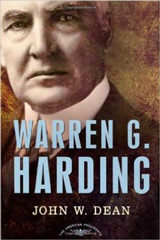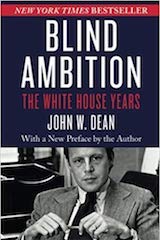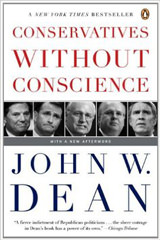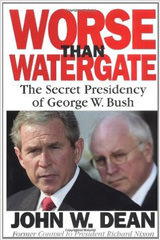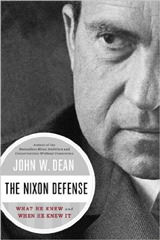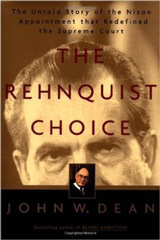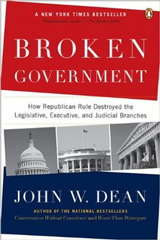I do not know Professor Donald Langevoort, who is the Thomas Aquinas Reynolds Professor of Law at the Georgetown University Law Center, where he specializes in business organizations and securities regulation. Moreover, it was not his eminence in business and securities law that caught my attention. Rather, it was his use of cognitive psychology in examining corporate law-related processes in general, and the professional responsibilities of lawyers, in particular.
While looking for explanations of why lawyers have ethical lapses, I found Professor Langevoort’s work. Although Professor Langevoort focuses on business organizations and operations, his studies strike me as also being applicable to political and other organizations and activities, as well. In grappling with why lawyers do the things they do, both right and wrong, he addresses underlying psychological factors occurring in organizational situations—and, in many regards, selling subprime mortgage-based derivatives is not unlike selling a candidate who is seeking high elective office.
Because Langevoort’s work is extensive, I can only share a brief sample of it,with a few illustrative examples. I had not realized that psychology had become such a useful tool in understanding the behavior of lawyers in organizational situations. For those who find this subject of interest, Professor Langevoort’s works since 2000 are listed in his Georgetown Law biography.
Psychological Approaches to Corporate Law and Lawyers
Professor Langevoort does not exactly put lawyers and their clients on the couch and analyze them. But he does use psychology’s research tools on specific cases. For instance, I found his analysis of the scienter standard in the Martha Stewart securities fraud case very revealing.
In a new book, Research Handbook on the Economics of Corporate Law (available for $243.66), Langevoort provides one of the closing chapters. There, he explains how and why psychology has moved from the social sciences to the business schools, and now to the law schools, as well. The short explanation is that lawyers and law professors are seeking to better understand law-related issues in organizational behavior and corporate governance by using psychological studies of relevant behavioral and cognitive traits.
As Langevoort noted in an earlier edition of this chapter, legal scholars have not had to become social scientists to glean these insights; rather, researchers in business schools have been adapting these studies for many years. So legal scholars now have a significant body of work from which they can draw. However, Langevoort is quick to point out that legal scholars must do their own research, and not merely borrow from psychology, and that kind of scholarship is now, indeed, occurring.
“Psychology offers useful insights to corporate law scholars in situations where the particular trait or tendency in question is empirically robust, situationally plausible, and …so hard-wired into the human brain that it will operate even in the face of substantial institutional constraints and disincentives…,” Langevoort explains.
Professor Langevoort has demonstrated how psychology can provide such insights, in many of his published works. For example, he has noted how attorneys representing corporations—and at times, other organizations as well– do so at the risk of failing to comply with professional standards of integrity and detachment, if they do not appreciate their own “cognitive biases,” a topic about which, presumably, the current generation of law students is now being informed.
Ignoring Gorillas: How Lawyers Simply May Not See a Problem That Should Have Been Obvious
In a 2011 essay examining the role (or lack thereof) of lawyers in the recent financial crisis, Getting (Too) Comfortable: In-house Lawyers, Enterprise Risk and the Financial Crisis, Langevoort does not seek to blame or exonerate lawyers for the high-risk financing schemes that collapsed the economy, but rather to understand their role. Along the way, he explores “various reasons that lawyers might have missed the problems until it was too late.”
One such reason might be the phenomenon that psychologists call “cognitive blindness.” To illustrate how it works, Langevoort shares “a famous set of experiments involving some combination of basketballs, umbrellas and a gorilla.” The experiment goes as follows: A subject being tested is told to concentrate on, and keep track of a particular activity in a video. For instance, he or she will be asked to count the number of times that those persons who are wearing white shirts pass the basketball. As a result of this challenging cognitive task, most subjects will not observe far more dramatic matters like a woman opening an umbrella or a man in a gorilla suit. (Readers who want to observe this phenomenon for themselves may want to view this YouTube video.)
Langevoort believes that, during the financial crisis, there were times and places when lawyers could have, and should have, seen the “gorillas.” So how did they miss them? The answer lies in analyzing organizational factors, and related psychological factors.
Organizational and Psychological Factors Influencing a Lawyer’s Perceptions
When lawyers do not have personal knowledge of a given subject, they learn from others within an organization. Langevoort says that, intuitively, lawyers seek out those with the information, but that strategy is not without its problems. Often, the necessary information is diffuse, and not easily accessible. In large organizations, moreover, information-gathering is not among the usual responsibilities of counsel. And here, Langevoort reports a phenomenon in information collection: “the circularity of what psychologists describe as social proof: the tendency to rely heavily on the apparent perceptions of others when one lacks confidence in one’s own perceptions.” This phenomenon can occur throughout an organization, with problems—even very serious problems—consequently falling through the cracks.
Another problem in obtaining accurate information is discerning whether that information is or is not biased, and if so, how. Langevoort has written extensively about biases, and when an attorney turns to managers with expertise, if the attorney receives biased information (as is often the case if checks have not been put in place) then any legal analysis will contain that bias. As he writes, “[T]here are natural and common perceptual biases in organizations that favor optimistic construal over anxiety.” A kind of “groupthink” may exist where the group ignores problems the existence of which is inconsistent with its preferred views.
Langevoort warns that good lawyers will worry about the pathologies at work in obtaining information. His advice is sometimes counterintuitive. For instance, he counsels that, rather than rely on those “who display intensity, passion, and commitment” and are the leaders whom others typically follow, the wise lawyer should ask if these traits should be seen “as potential risk markers rather than reasons to defer.”
Examples of Troublesome Cogitative Biases for Lawyers
By the nature of the profession, lawyers are busy. Thus, lawyers’ not noticing the gorillas—that is, suffering from cognitive blindness—does not surprise Langevoort. Here are a few other examples I have drawn from (and here, I am paraphrasing or quoting) his recent examination of the role of in-house (as well as outside) counsel in a contemporary corporate setting:
Cognitive Dissonance: This is the tendency to interpret new information in a manner that is consistent with past choices, thus “preserving the sense that those choices were justifiable rather than mistaken.”
Conforming Perceptions: When new lawyers join an organization, they often take cues from others within the organization, which results in a form of groupthink.
Motivated Inferences: Longstanding testing shows that “a person who wants to come to a particular inference will, subconsciously, look for ways to do so.”
Self-Interest: Some lawyers are motivated to opt for conservative actions because if they give bad advice, it could be costly to their career. Other lawyers are, conversely, encouraged to take risks. Various parties’ self-interest must be understood and recognized in context, and a correct balance found.
In-Group Identity: All of these traits, tendencies, and behaviors have consequences, but more pernicious, for Langevoort, than the aggressiveness that this can produce—where with time loyalty to the corporation colors the lawyers’ thinking—are their attitudes to the regulators and courts with whom they must deal, who in their eyes become rivals, or risks, to be dealt with.
These are only a sample of the cognitive traps confronting lawyers (and others) in large organizations. I have selected them in order to suggest the nature of Langevoort’s work—and hopefully, in doing so, have not overly distorted it. I recommend this work highly to others, for it is not merely instructive, but may be indispensable. It is vital that lawyers understand their own cognitive biases so that they can do what they are trained to do: Solve problems, resolve disputes, and keep the organization for which they serve as counsel on the proper side of the law.








